【第八十四回目】
千疋屋総本店:進化するフルーツショップ
Sembikiya Main Store: An ever-evolving fruit shop
Sembikiya Main Store: An ever-evolving fruit shop
| セインさん、今日は日本橋の「千疋屋総本店」を訪ねます。江戸後期に創業して、およそ185年の歴史があるフルーツショップですが、いらしたことはありますか? Today we’ll be visiting the Sembikiya Main Store in Nihonbashi. Founded in the late Edo Period, it’s a fruit shop with a history of about 185 years. Have you ever been to this shop? |
|
| もちろんです。それから、この店の果物やケーキが届いたり、手土産にもらったことも何度もあります。そろそろどこからか届かないかなぁ(笑)。 Of course. And I’ve also been given gifts like fruit and cakes from this shop a few times over the years. I’m hoping I’ll be getting something again from here from someone soon (laughs). |
|
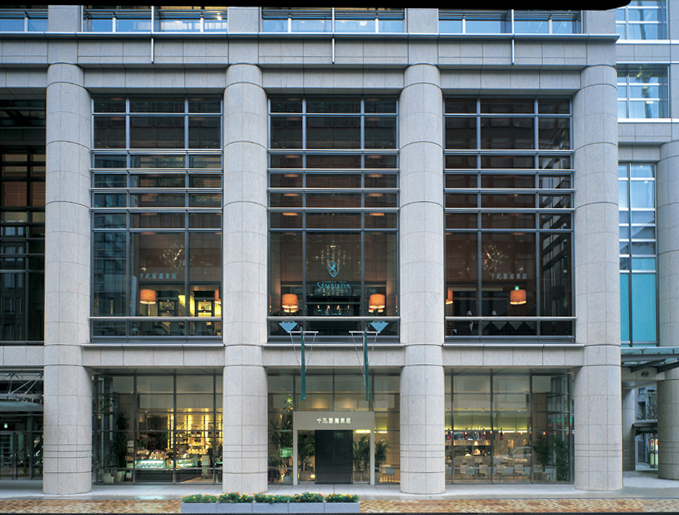 千疋屋総本店の外観 [Picture: appearance from Nihonbashi sennbikiya] |
|
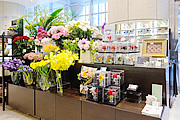 千疋屋総本店の店内 [Picture:store interior] |
|
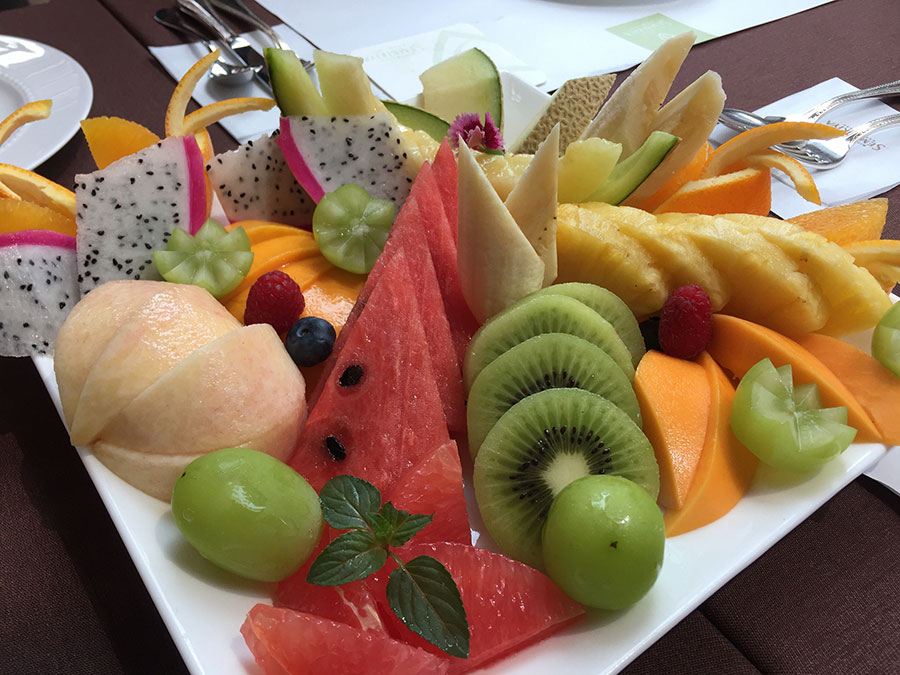 フルーツ盛り合わせイメージ [Picture: Assorted fruits] |
|
| (大島) | ようこそ、セインさん。千疋屋総本店の大島 博です。 Welcome. I’m Hiroshi Oshima from the Sembikiya Main Store. |
| こんにちは、大島さん。現代的で洗練された雰囲気のお店なので、江戸時代からの長い歴史があると聞くと、ちょっと意外な感じがします。大島さんが、何代目のご当主になるのですか? Hello. This is a modern and stylish shop, so when I heard that it dates back to the Edo Period, I was a little surprised. What generation of owner are you? |
|
| (大島) | 私で6代目です。初代は弁蔵という名前の侍で、武蔵国の千疋村(現在の埼玉県越谷市内)で槍の道場を開いていたのですが、それだけではなかなか食べていけないので、千疋村で採れる野菜や果物を江戸に運び、売ることを考えました。 川や水路を利用して舟で江戸に入ってきて、荷揚げをするのは葺屋町、現在の人形町3丁目あたり。ここに「水ぐわし(水菓子)安うり処」の看板を掲げて、露店を構えたのが江戸後期の天保5年(1834)と伝わっています。 I’m the 6th generation owner. The first generation owner was a samurai named Benzo who opened a spear dojo in the Musashi province village of Sembiki (present-day Koshigaya City, Saitama Prefecture), but because it was difficult to make a living just through that, he decided to collect fruits and vegetables in the village and take them to sell in Edo. He came into Edo by boat through rivers and waterways, and unloading was done in Fukiyacho, which is present-day Ningyocho Sanchome. It’s said that this is where he set up a street vendor stall with a sign that said “Mizugashi Yasuuri Dokoro” (Fruits Discount Shop) in the late Edo Period in 1834. |
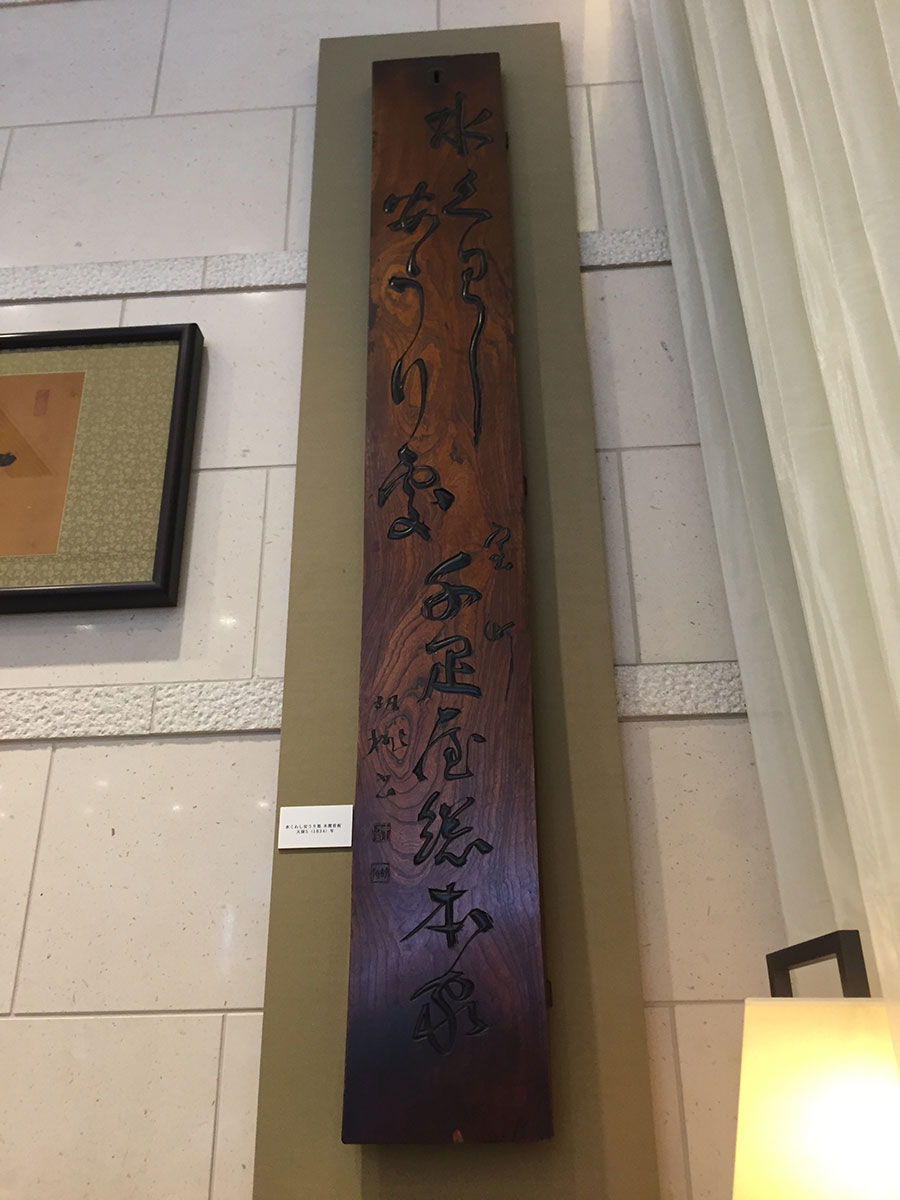 千疋屋看板 [Picture: kanban from Nihonbashi sennbikiya] |
|
| 千疋屋という、ちょっと変わった店名は、初代が住んでいた村の名前だったんですね! 当時はどんな果物が栽培されていたんでしょう。 Oh, so the slightly unusual shop name of Sembikiya was the name of the village that the first generation owner lived in! What kind of fruit was grown there at the time? |
|
| (大島) | 越谷は、桃の名産地として有名だったそうです。ほかに、栗やスイカ、まくわうりなどもよく採れたようです。 Koshigaya is said to have been a famous place for peaches. Other than that, it seems that chestnuts, watermelon and oriental melon were also often harvested there. |
| まさに産直。新鮮で安いんですから、弁蔵さんの店はすぐに流行ったでしょうね。 So it came directly from the source. Because of the freshness and low prices, I imagine that Benzo’s shop was quite popular. |
|
| (大島) | 当時の人形町には芝居小屋がいくつもあって、一日中賑わっている街でしたから、商売をするには絶好の場所だったようです。 そのあとを幕末に店を引き継いだのは、文蔵といいます。2代目となった文蔵は、より品質の良いものを売ることに情熱を傾けた人で、大店の娘で高級料亭・八百善で茶の湯の接待を務めていた「むら」を嫁にしたことで八百善、さらには政財界、文人、上流階級と客層を広げ、最終的には徳川家御用達商にまでなりました。 There were a lot of theaters in Ningyocho at the time, and it was a bustling area, so it seems that it was a great place to do business. After that, at the end of the Edo Period, a person named Bunzo took over the shop. He was the second generation owner and was passionate about selling high-quality fruit. He married a girl named Mura, a daughter coming from a large store who had worked and held tea ceremonies at a high-class ryotei called Yaozen. He expanded his customer base to Yaozen, and then even further to important people in politics and business, and to the educated and the upper classes, and he eventually even became a purveyor of the ruling Tokugawa clan. |
| 安くして新鮮なものが並ぶ果物店から、おいしさを追求する高級店になっていったんですね。 From being a fruit shop with cheap and fresh fruit, it became a luxury shop for discriminating customers. |
|
| (大島) | はい。さらに、3代目を継いだ代次郎は、明治元年(1868)に東京一の繁華街、日本橋室町に店を移転させます。 また、外国産の果物の輸入に力を入れるかたわら、国産果物の品種改良や品質向上にも取り組みました。そして、この考え方は代次郎の名を継承した4代目にも引き継がれます。 4代目は今の世田谷区上馬に3千坪の自家農場を開いてメロンなどさまざまな果物を栽培して品種改良に励みました。またアメリカ視察で見たソーダファウンテン(カウンターで清涼飲料水を出す店)にヒントを得て、日本初のフルーツパーラーを開店します。 そして、私の父が昭和35年(1960)に33歳で5代目を継承します。 父は、支店網を拡充するとともに、従業員の福利厚生などにも力を入れて会社の形を整え、昭和43年(1968)に本店を建て直しました。 That’s right. A man named Daijiro was the third generation owner, and he relocated the store to downtown Tokyo’s Nihonbashi Muromachi in 1868. Besides focusing on importing foreign fruits, he also worked on selective breeding and quality improvement for domestic fruits. This way of thinking was also passed down to the fourth generation owner who would inherit the name of Daijiro. The 4th generation owner opened his own 9,900 square-meter farm in today’s Kamiuma in Setagaya Ward, where he cultivated a variety of fruits such as melon and encouraged selective breeding. He was also influenced by a soda fountain that he saw during a visit to the United States, leading to the opening of the first fruit parlor in Japan. Then, when my father succeeded as the fifth generation at the age of 33 in 1960, he expanded the network of branches, and also put emphasis on things such as employee benefits to strengthen the company, and he rebuilt the main store in 1968. |
| その本店は、僕もよく覚えています。それにしても、代々のご当主が有能ですね。 そして、いよいよ大島さんの時代になるわけですね。6代目を引き継いだのは何歳の時ですか? I remember that main store well. Each generation of owners has been very competent. And now it’s time for your generation. How old were you when you took over as the sixth generation owner? |
|
| (大島) | 平成10年(1998)、40歳の時です。 It was in 1998, when I was 40. |
| 老舗に生まれると、子どもの頃から早く自分の手でこの店を経営したいと思いながら育つものですか? Being born into a long-established shop, did you grow up wanting to run this shop yourself as soon as you could? |
|
| (大島) | 僕の場合は、そういうことはなかったですね。学生時代は音楽が好きで、レッドツェッペリンやディープパープルに夢中になっていましたから。ですが、大学卒業後に遊学したアメリカのニューヨーク大学で老舗経営学に出会って、経営のおもしろさを知りました。 尊敬する教授がイギリスに渡ると私もイギリスに行き、合わせて3年ほど学びました。そして知ったのがブランディングの重要性です。 In my case, that wasn’t the case. Because I liked music during my school days, I was absorbed in Led Zeppelin and Deep Purple. After graduating from a university in Japan, I went to New York University and became interested in the management of long-established businesses, and I started to really get interested in business administration. When the professor I respected moved to England, I also went there and studied for about three years. What I learned there was the importance of branding. |
| では、帰国されると、早速、実行? So when you returned to Japan, did you implement what you learned right away? |
|
| (大島) | いえ、海外から帰ってきてからの数年間は、いろいろな部署をまわっていました。会社のすべての部署を経験してから社長に就任したんです。
また、就任後も3年間は、父のやり方を踏襲しました。そうしている間に、老舗の持つ信頼や伝統のありがたさを感じる一方で、お客様から見ると敷居が高いと感じてしまうような、時代とのずれが見え始めました。 No. After coming back from abroad I worked in various departments in the company for several years. After experiencing all the departments, I became the president. During the first three years of being president, I followed in my father’s footsteps of how he did things. While doing that, I felt appreciation for the trust and tradition that long-established stores have, but I also began to see that times were changing and that the feeling of hesitation by customers might be increasing. |
| たしかに、20年ほど前の千疋屋総本店といえば、立派すぎて、近づきがたいイメージだったかもしれません。 I see what you mean. About 20 years ago, the Sembikiya Flagship Store was perhaps too luxurious, making it rather hard for customers to approach. |
|
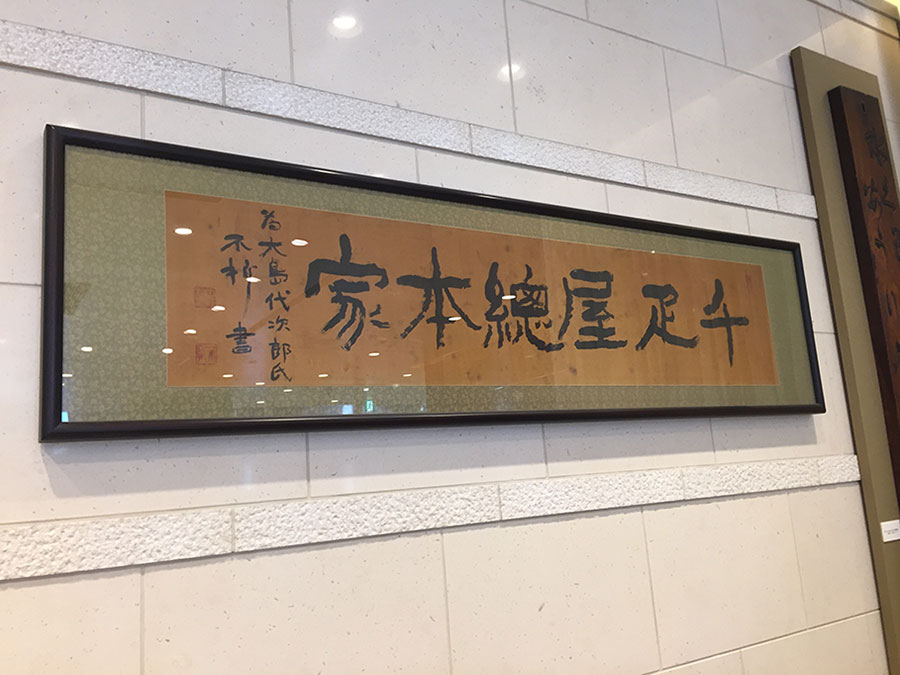 千疋屋総本店看板 [Picture: from Nihonbashi sennbikiya] |
|
| (大島) | そうなんです。そこで、「ブランド・リヴァイタル・プロジェクト」を立ち上げました。アンケートなどを行って課題を明確にすると、やるべきことが見えてきました。 高級路線は変えませんが、お客様の手が届くことを大切にするために、あえて「高級」という言葉を使うのをやめ、代わりに「一つ上の豊かさ」をブランドアイデンティティのコアに据えることにしました。そして、商品はもとより、店舗や社内機構など、すべてについて見直しました。 たとえば、それまでのロゴ・マークを一新しましたし、商品は数百円から買っていただける加工品やケーキなどの品揃えを充実させました。ポリシーだけではなく、目に見える形で変えていったんです。こうして、若いお客様がどんどん増えていきました。 そして、そんな取り組みをしている最中に、日本橋地区の再開発の一環として、本社ビル建て替えの話が来ました。日本橋三井タワーが竣工して、1階と2階にカフェやフルーツパーラー、ダイニングなどが入るこの店がオープンしたのが、平成17年(2005)です。 That’s right. That’s why we launched the Brand Revital Project. From doing a survey to clarify any problems, we were able to see what we had to do. We didn’t change the luxuriousness, but to help customers feel we were affordable, we deliberately stopped using the word “luxury” and made “richness above the rest” our core brand identity. Then we reconsidered everything from the products to the shops and company structure. For example, we redesigned the logo and enhanced the range of products such as processed items and cakes that can be purchased for just a few hundred yen. Not only did we change policies, but also made things in a more visible form. With this, the number of young customers has steadily increased. While make these changes, our main building was reconstructed as a part of the Nihonbashi area redevelopment project. When the Nihonbashi Mitsui Tower was completed in 2005, we opened the shop with cafe, fruit parlor and dining areas on the 1st and 2nd floors. |
| すごいですね! でも、ブランドイメージを変えるというような大きな事業になると、先代と意見が衝突するということはなかったのですか? That’s great! But when undertaking a big task like changing the brand image, wasn’t there any conflict of opinion with the previous generation? |
|
| (大島) | もちろん、ずっとぶつかっていましたよ(笑)。でも、業績が良くなっていくうちに、任せて大丈夫だと思ってくれたのか、何も言わなくなりました。この20年で売り上げは5倍になりました。その売り上げの2割が生のフルーツ、8割が加工品です。 Of course. We argued all the time (laughs). But as sales improved, the older generation started to see that it was okay to leave it to us, and they stopped saying things. Sales have increased fivefold in 20 years. About 20% of our sales comes from raw fruit and 80% from processed items. |
| 千疋屋が新しくなった、いい感じになったというイメージを多くの人が感じていると思います。 ちなみに大島家には、家訓のようなものはあるんですか? It seems like a lot of people feel that Sembikiya has a new and improved image. By the way, do you have anything like a family motto? |
|
| (大島) | 家訓は、「奢るべからず、焦るべからず、欲張るべからず」というものです。 Our family motto is “Don’t be conceited. Don’t rush. Don’t be greedy.” |
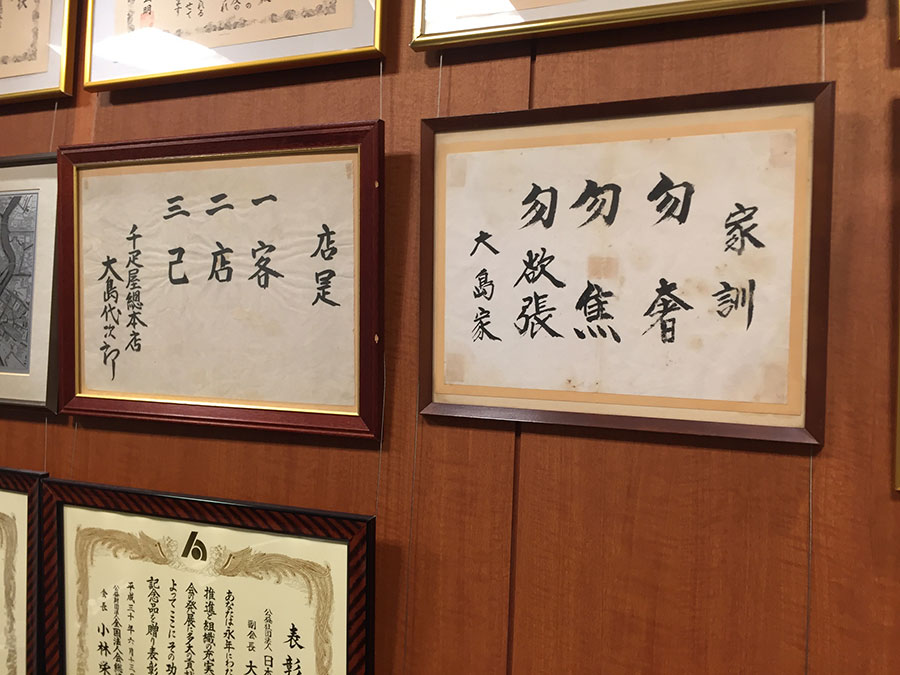 千疋屋総本店家訓 [Picture: from Nihonbashi sennbikiya] |
|
| いい家訓ですね。今日のお話のなかには関東大震災や戦争など、苦労された時代の話は出てきませんでしたが、そうした苦難の時代にも、もちろん順調な時代にも、家訓を噛みしめて代々が頑張ってこられたんですね。 That’s a nice motto. Today we didn’t talk about the difficult times such as during the Great Kanto Earthquake or the war, but even in such times of hardship as well as in good times, each generation recalled the family motto and did their best. |
|
| これからも進化は続きそうですね。今、未来に向けて、どんなことを思っていらっしゃいますか? It looks like Sembikiya will continue to evolve into the future as well. What are your plans and hopes for the future? |
|
| (大島) | 私自身のことでいえば、謙虚に、いろいろな物を見て成長していきたいと思っています。そして千疋屋は時代に流されることなく、敏感に反応していかねばならないと思っています。 Speaking for myself, I humbly want to observe a lot of things and learn from them. I think that Sembikiya needs to be sensitive to the changing times without being swept away by them. |
| 今日、お話を聞いて、ますます千疋屋のファンになりました。 After talking to you today, I’ve become an even bigger fan of Sembikiya. |
|
| (大島) | ちょうど今日は「世界のフルーツ食べ放題」の開催日で、フルーツパーラーで準備が始まっています。いろいろな果物をカットしていますから、ご覧になりますか? Today happens to be the “All-you-can-eat fruit of the world” day, and the fruit parlor is starting preparations. They’ll be cutting various types of fruit, so would you like to watch? |
| ぜひ、千疋屋のプロの仕事を拝見したいです! 今日はありがとうございました。 I’d love to see a Sembikiya pro at work! Thank you for your time today. |
|
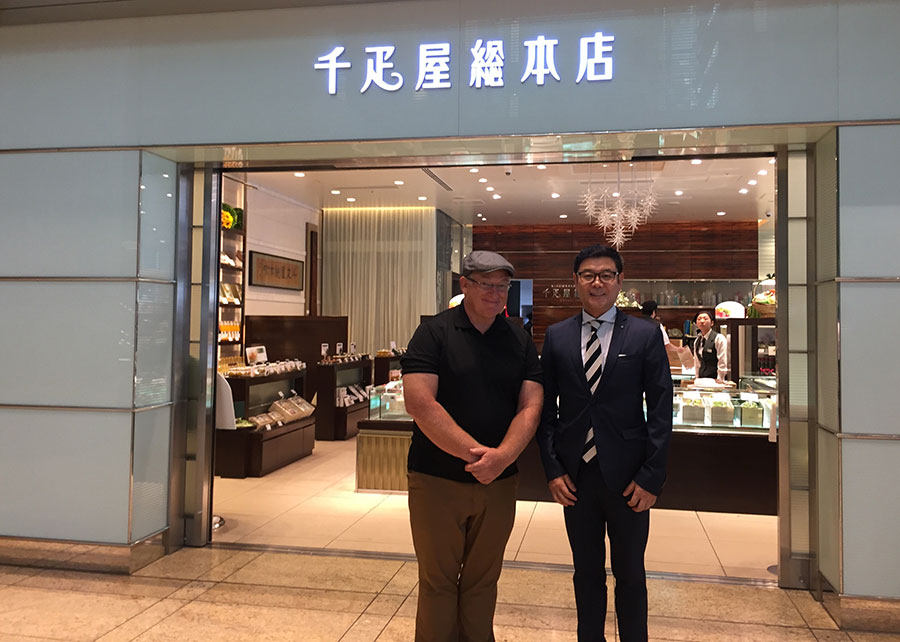 【記念撮影】 [Photo: Commemorative photo] |
|
| 千疋屋ホームページはコチラ | |
| (文)太田美代 (英訳)デイビッド・A・セイン |
 1959年、米国生まれ。証券会社勤務を経て来日し、翻訳・通訳など多岐にわたって活躍。豊富な教授経験を生かし、数多くの英語関係書籍を執筆。近著に『日本人のチョットへんな英語』(アスコム)、『超入門シャドーイング』(主婦の友社)、日本人が使いすぎる英語(PHP文庫)など多数。 下町の魅力に魅了され、自身が代表を務める英語関連のコンテンツ会社のエートゥーゼットのオフィスを根津に構えている。英会話本の執筆をしながら、東京・文京区根津と春日にあるエートゥーゼット英語学校の校長も務める。 http://www.smartenglish.co.jp/
1959年、米国生まれ。証券会社勤務を経て来日し、翻訳・通訳など多岐にわたって活躍。豊富な教授経験を生かし、数多くの英語関係書籍を執筆。近著に『日本人のチョットへんな英語』(アスコム)、『超入門シャドーイング』(主婦の友社)、日本人が使いすぎる英語(PHP文庫)など多数。 下町の魅力に魅了され、自身が代表を務める英語関連のコンテンツ会社のエートゥーゼットのオフィスを根津に構えている。英会話本の執筆をしながら、東京・文京区根津と春日にあるエートゥーゼット英語学校の校長も務める。 http://www.smartenglish.co.jp/







